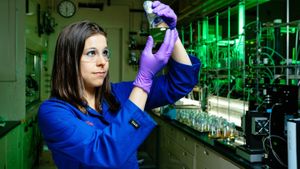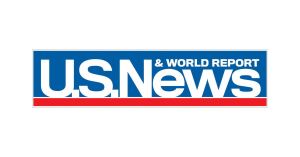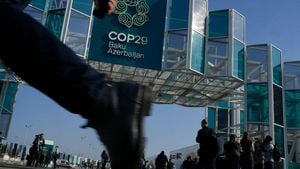NASA has embarked on yet another chapter of its storied history with the recent announcement detailing how it plans to rescue two astronauts stranded aboard the International Space Station (ISS). The agency revealed plans for astronauts Barry "Butch" Wilmore and Sunita "Suni" Williams to return to Earth via SpaceX, following complications with Boeing's CST-100 Starliner spacecraft.
Wilmore and Williams originally launched on June 5 onboard Boeing's astronavigation, intended to be one of the initial test flights for Starliner, marking their first crewed mission. They were supposed to complete their eight-day stay and return posthaste. Unfortunately, during this inaugural flight, multiple failure points, including malfunctioning thrusters and helium leakages, created roadblocks, resulting in prolonged occupancy aboard the ISS.
The astronauts found themselves stuck for months as Boeing's spacecraft grappled with multiple issues, leading NASA to put out feelers for alternative exit strategies. Initial estimates had them returning home much sooner, but with every delay came increasingly complex decisions surrounding their rescue.
"The decision to keep Butch and Suni aboard the International Space Station and bring the Boeing Starliner home uncrewed is driven by safety" stated NASA Administrator Bill Nelson during a news conference. He cited past tragedies involving crewed missions as the backdrop for this cautious decision-making process—a pragmatic approach to mitigating risks.
While SpaceX has partnered with NASA extensively over the years for various missions, it now extends its services yet again, demonstrating its growing dominance within the civilian spaceflight sector. They are set to carry the two astronauts home aboard the upcoming Crew-9 mission, which is scheduled to launch at the end of September 2024. The astronauts’ expected return date has now been pushed to February 2025, many months beyond their initial expectations.
NASA's decision has placed additional scrutiny on Boeing's capabilities and future contributions. Once entrenched as leaders in aerospace engineering, Boeing now faces mounting criticism and challenges stemming from the botched Starliner program. Following years of setbacks—offset by significant financial losses amounting to $1.6 billion—Boeing is left with more questions than answers as NASA leans on its competitor to extricate its astronauts from low Earth orbit.
Meanwhile, SpaceX will need to undertake seat modifications on the Crew-9 capsule. Originally, the plan was to onboard four astronauts, but this mission will see only two of them on board to accommodate Wilmore and Williams on their flight back to Earth. An emergency protocol is also engaged; adjustments are planned for SpaceX’s Crew-8 capsule, already docked at the ISS, to carry up to six passengers if mechanical issues arise during flight with the Crew-9 mission.
Gwynne Shotwell, president of SpaceX, assured stakeholders of their readiness, stating, "SpaceX stands ready to support NASA whenever we can." Although the administration has publicly stated there was no concept of conducting any quick standalone rescue missions, there remains confidence surrounding the upcoming return operation.
Notably, the backdrop of NASA's decision arrives amid intense political scrutiny, highlighted by the high-stakes 2024 U.S. presidential race where incumbent Vice President Kamala Harris is set to face former President Donald Trump. Given Harris's leadership of the National Space Council, the decision could reverberate throughout the campaign. Nevertheless, Nelson was quick to note, "NASA is not only bipartisan, it is nonpartisan..." demonstrating the necessity of science over politics.
Despite the logistical and technical challenges surrounding the Starliner spacecraft, Boeing's new CEO, Kelly Ortberg, has reiterated the company’s commitment to solving these problems. "We will continue to work the issues once Starliner is safely back," he emphasized.
This latest setback emphasizes the complexity and inherent risk associated with human spaceflight—a sentiment echoed by space experts following the announcement. Lori Garver, former deputy administrator of NASA, cautioned, "Finishing the Starliner mission with crew aboard relates to NASA’s overall plans for sustainable operations and future crew access to the station."
The circumstances surrounding Wilmore and Williams are unprecedented; initially scheduled for merely eight days, they now find themselves facing unexpected durations and challenges managing their extended stay on the ISS. How the astronauts will pass their time has also become of public interest, with various discussions surrounding crew activities during this unplanned delay.
Presently, all eyes are focused on ensuring the safe return of both astronauts and the reunion with their families after what has turned out to be the far longer mission than anticipated. SpaceX's close involvement with NASA and its experience may well signal its increasing centrality to future crewed missions, setting the stage for what one could anticipate from commercial space travel.
While SpaceX's involvement heralds hope of timely rescue, it leaves Boeing with continued challenges to address the nuances of the Starliner program, emphasizing its necessity for reliability and safety before it is entrusted with housing astronauts again.



